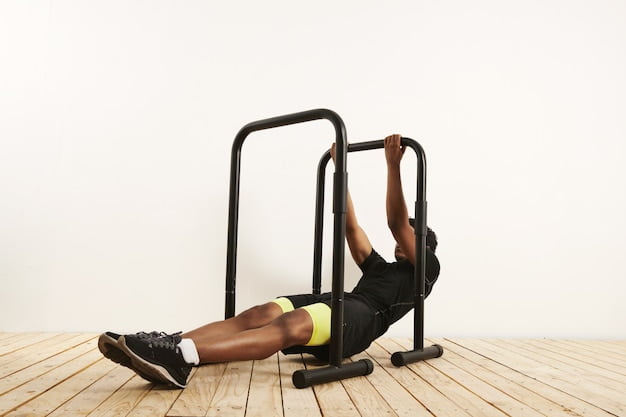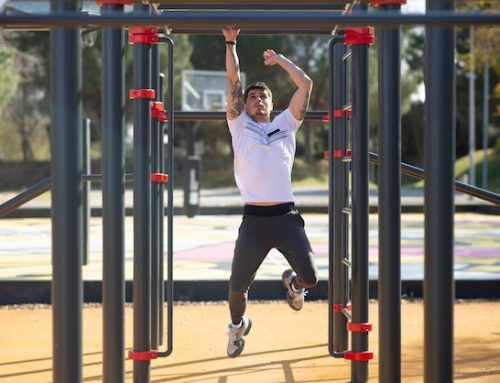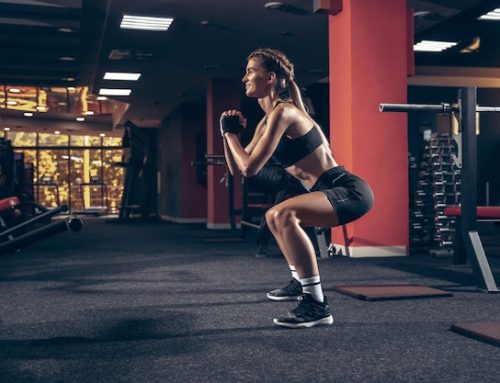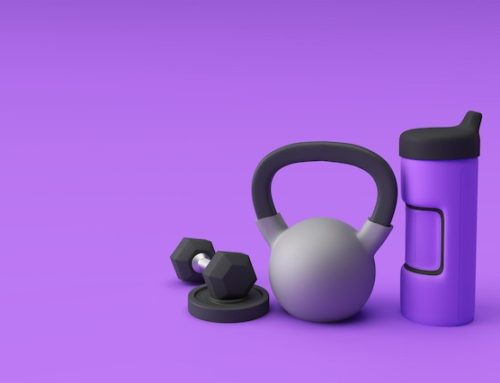Introduction
Calisthenics is a form of exercise that involves using your body weight to build strength, flexibility and endurance. It’s a workout that requires little equipment, making it an ideal way to stay fit for people who don’t have a lot of time or money to spend on a gym membership. However, many people wonder whether calisthenics is harder for heavier people.
Bodyweight exercises vs. lifting weights
Calisthenics is essentially bodyweight training, which means that you use your own body weight as resistance when you exercise. This makes it a great workout for people who don’t have access to weights, or who prefer to exercise at home or outdoors. However, some people believe that bodyweight exercises are harder for heavier individuals because they’re carrying more weight.
On the other hand, lifting weights tends to be more forgiving on body weight, since the amount lifted can be adjusted to the person’s strength. The weight lifted in a bench press or a squat, for example, can be adjusted to fit the person’s strength level and weight.
The impact of body weight on calisthenics
While it’s true that body weight can be a factor in calisthenics, it’s not necessarily true that it makes it harder. In fact, heavier individuals may find it easier to perform certain calisthenics exercises, particularly those that require more power, such as explosive jumps and explosive push-ups.
However, some exercises may be more challenging for heavier people, particularly those that require greater flexibility or endurance. For example, heavy individuals may struggle to perform exercises like the pistol squat or the hanging leg raise due to their body size.
What Are Good Exercises for Obese Beginners?
The best exercises for obese beginners are bodyweight squats, pull-ups, push-ups-, and dips. They can also perform static lunges, calf raises, crunches, and planks. These exercises have beginner modifications that help obese beginners lose fat and build strength.
The benefits of calisthenics for heavier individuals
One of the main benefits of calisthenics for heavier individuals is that it’s a low-impact workout that puts less strain on the joints than traditional weightlifting. This can be particularly beneficial for people who are carrying extra weight, as it reduces the risk of injury and joint pain.
Calisthenics is also a great way to build functional strength, which can help heavier people to perform everyday tasks with greater ease, such as lifting and carrying heavy objects. Additionally, calisthenics can help to improve posture, which is particularly important for heavier individuals who may be more prone to back problems. Calisthenics can provide several benefits for heavier individuals, regardless of their body weight. Here are some of the advantages of calisthenics training:
- Strength and Muscle Development: Calisthenics exercises engage multiple muscle groups and promote functional strength. By performing bodyweight exercises like push-ups, squats, and lunges, heavier individuals can build muscle strength and increase overall muscular endurance. This can contribute to improved physical performance and everyday activities.
- Weight Management and Fat Loss: Calisthenics training can be an effective tool for weight management and fat loss. It helps burn calories and promotes metabolic activity, which can aid in weight loss efforts. Regular calisthenics workouts, combined with a balanced diet, can help heavier individuals achieve their weight management goals.
- Joint-Friendly Exercise: Calisthenics exercises generally have a lower impact on joints compared to activities like running or weightlifting. This can be advantageous for heavier individuals, as it reduces the risk of joint strain or impact-related injuries. Calisthenics exercises allow individuals to strengthen their muscles and improve their fitness without excessive stress on the joints.
- Improved Mobility and Flexibility: Calisthenics movements often require a good range of motion and flexibility. By regularly practicing calisthenics exercises, heavier individuals can work on their mobility and flexibility, gradually improving their joint range and movement capabilities. This can enhance overall physical function and make daily activities more manageable.
- Body Awareness and Control: Calisthenics exercises require coordination, body control, and balance. For heavier individuals, engaging in calisthenics can help improve body awareness and control, enhancing overall movement patterns and reducing the risk of falls or accidents.
- Increased Energy and Fitness Levels: Regular calisthenics workouts can boost energy levels, improve cardiovascular fitness, and enhance overall endurance. This can lead to improved stamina and the ability to engage in physical activities with greater ease, regardless of body weight.
- Accessibility and Convenience: Calisthenics can be performed almost anywhere, as it primarily relies on bodyweight and minimal equipment. This accessibility makes it a convenient form of exercise for heavier individuals who may feel uncomfortable or intimidated by traditional gym settings.
Tips for heavier individuals starting calisthenics
If you’re a heavier individual who is interested in starting calisthenics, there are a few things you can do to make the transition smoother.
Firstly, start slowly and build up gradually. Don’t try to do too much too soon, as this can lead to injury and burnout. Instead, focus on getting the form right and building a solid foundation of strength.
Secondly, consider working with a coach or trainer who can help you to create a workout plan that’s tailored to your individual needs and goals. They can also provide guidance on proper form and technique, which is particularly important for heavier individuals.
Finally, make sure you’re eating a healthy, balanced diet that supports your fitness goals. This will help you to fuel your workouts and ensure that you’re getting the nutrients you need to build strength and endurance.
Conclusion
In conclusion, while body weight can be a factor in calisthenics, it’s not necessarily true that it makes it harder. Heavier individuals may find some exercises easier, while others may be more challenging. However, calisthenics is a great workout for people of all shapes and sizes, and can be particularly beneficial for heavier individuals looking to build strength, flexibility, and endurance. By starting slowly, working with a coach, and eating a healthy diet, heavier individuals can successfully incorporate calisthenics into their fitness routines.






